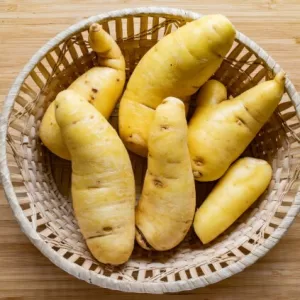Parsnip: The Underground Treasure of South American Cuisine
Explore the history, culinary variations, and multiple uses of the parsnip, a versatile root that enriches the flavors of South America.
Amid the richness of South American biodiversity, an underground treasure has for centuries captured palates and nourished peoples: the Parsnip. Known in different regions by names such as “mandioquinha,” “yellow carrot,” and “parsley root,” the Parsnip is more than a simple tuber; it is a cultural heritage, a source of nutrition, and a versatile ingredient that has beautified South American cuisine.
Origins and History
The parsnip (Arracacia xanthorrhiza) is a tuber native to the Andes, cultivated and appreciated since pre-Columbian times. Its history dates back to the indigenous civilizations that inhabited the mountainous regions of Colombia, Ecuador, and Venezuela, where the cold climate and fertile soil favored its cultivation. Over the centuries, the parsnip traveled to other regions of the continent, finding in Brazil, especially in the states of Minas Gerais and Paraná, a new home where it became an essential ingredient.
Characteristics and Varieties
The Parsnip stands out for its vibrant color that ranges from yellow to orange, depending on the variety. Its elongated shape and small to medium size resemble a miniature carrot, but with a smooth texture and a unique flavor that evokes a mix of potato with a slight nutty nuance. When cooked, its soft texture and ability to absorb flavors make it ideal for a multitude of dishes.

Nutritional Value
Nutritionally, the parsnip is a gold mine. Rich in complex carbohydrates, it provides long-lasting energy. It is an excellent source of fiber, contributing to digestive health. Its striking color is an indicator of the presence of carotenoids, powerful antioxidants that are precursors to vitamin A, essential for vision and skin health. Additionally, it contains B-complex vitamins and minerals such as calcium, magnesium, and phosphorus.
Cuisine: The Use of Parsnip in Gastronomy
In gastronomy, the parsnip is a flexible star. It can be boiled, roasted, fried, or mashed, and is a perfect accompaniment to meats, poultry, and fish. In soups, it provides unparalleled creaminess, and in salads, it brings color and texture. It is not uncommon to find it in traditional South American dishes, like the Colombian ajiaco, a rich and comforting soup that includes chicken, corn, and, of course, parsnip.
Sustainability and Cultivation
Beyond its culinary and nutritional qualities, the parsnip also stands out in the realm of sustainability. Its ability to adapt to different altitudes and climatic conditions makes it a resilient crop that can be grown in small family gardens or on a larger scale without the need for intensive agrochemicals. This characteristic reinforces the importance of the parsnip in food security and the maintenance of sustainable agricultural practices.
Parsnip in Popular Culture
The parsnip also holds a special place in South American culture. In festivals and local fairs, it is common to find a wide range of artisanal products derived from the parsnip, from crispy chips to sweets and preserves. Its presence in popular sayings and folk songs reflects the deep connection that local communities have with this tuber.
Challenges and the Future of Parsnip
Despite all its benefits, the parsnip faces challenges, mainly related to production and distribution. Traditional knowledge about its cultivation is threatened by modernization and urbanization. Moreover, competition with export crops often relegates the parsnip to a secondary role in the agricultural scene.
To preserve this culinary treasure, it is essential to invest in agricultural sustainability programs that value native crops like the parsnip. Initiatives that promote crop diversification and family farming are crucial to ensuring that future generations can also enjoy this extraordinary tuber.
Conclusion
The parsnip is more than just food; it is a legacy, a symbol of resilience and adaptability, and a jewel of South American cuisine. Its value extends beyond the nutritional and gastronomic; it also lies in the heart of the traditions and identity of a people. By celebrating the parsnip, we honor the land and the wisdom of the ancestors who cultivated it, ensuring that this underground treasure continues to enrich South American cuisine and nutrition.